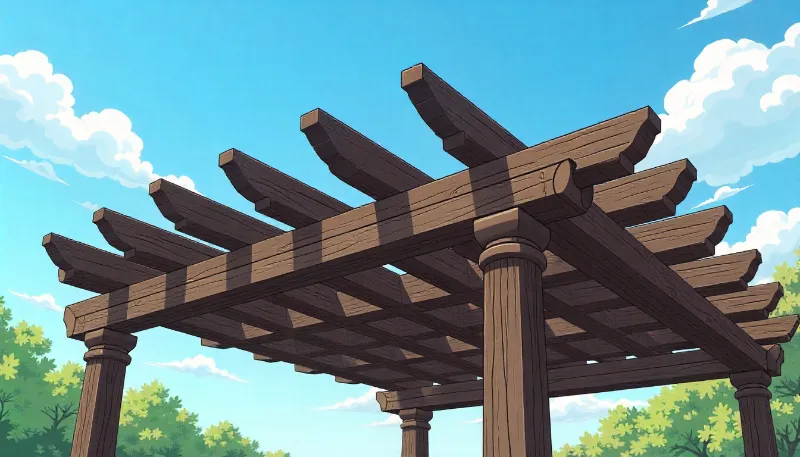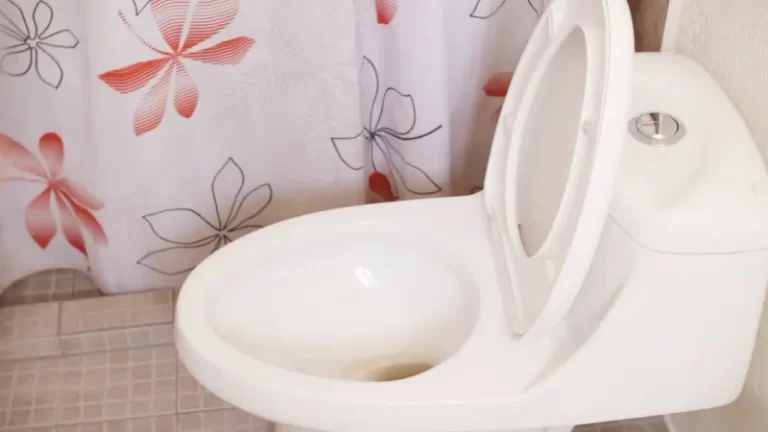2×2 Pergola Slats: The Ultimate Guide to a Modern Look
You envision a stunning, modern pergola transforming your backyard into a stylish oasis. The clean, geometric lines of a slatted roof appeal to you, but executing this vision feels daunting. This is a common problem for homeowners who desire a chic outdoor space but are unsure how to achieve it.
The core of the issue lies in the details. Choosing the wrong materials, incorrect spacing, or improper installation can turn your dream pergola into a structural disappointment that provides inadequate shade. This guide offers the solution by providing a comprehensive walkthrough of everything you need to know about using 2×2 pergola slats to create a functional and beautiful outdoor retreat.
You'll Learn About
Why Choose 2×2 Slats for Your Pergola?
The decision to use 2×2 slats is primarily an aesthetic one, driven by a desire for a contemporary, minimalist look. Unlike larger boards like 2x4s or 2x6s, 2x2s create a more delicate and intricate pattern of light and shadow. This results in a lighter, airier feel, preventing the pergola from feeling heavy or overbearing, which is ideal for smaller patios or decks.

This design choice offers a sophisticated visual texture that complements modern architecture and landscape design. The repeating parallel lines of the slats create a sense of order and rhythm, turning a simple shade structure into an architectural feature. It’s a versatile look that can range from a rustic cabana feel to a sleek, urban oasis depending on the wood and finish you choose.
The Great Debate: Shade vs. Sunlight
The most critical decision you’ll make when designing your slatted roof is the spacing between each 2×2 slat. This choice directly controls the amount of sunlight that filters through, defining the very function of your pergola. There is no single “correct” spacing; the ideal gap depends entirely on your personal preference and the climate you live in.
For those seeking significant shade to create a cool retreat during hot summer months, a smaller gap is essential. Spacing the slats 2 inches apart (resulting in a 1.5-inch gap, considering the actual width of a 2×2) can block a substantial amount of direct sun. For maximum shade, some designs place the slats with as little as a 1-inch gap between them, creating an almost solid roof effect while still allowing for air circulation.
Conversely, if you want to maintain a bright, sunny atmosphere while only slightly diffusing the harshest midday rays, wider spacing is the way to go. A 4-inch or even 6-inch gap will allow plenty of light to pass through, creating a dynamic interplay of light and shadow that shifts throughout the day. This is an excellent option for areas where you want to grow sun-loving plants or simply enjoy the warmth of the sun without full exposure.
Choosing the Right Wood for Your 2×2 Slats
The longevity and appearance of your pergola depend heavily on the type of wood you select. Since these structures are constantly exposed to the elements—sun, rain, and temperature fluctuations—it’s crucial to choose a material that is naturally durable and resistant to decay and insects. Using untreated pine is a common mistake that can lead to rot and structural failure in just a few years.
Several types of wood are well-suited for outdoor use, each with its own set of pros and cons. Cedar and Redwood are premium choices, celebrated for their natural beauty and inherent resistance to rot and pests. Pressure-treated pine is a more budget-friendly option that offers excellent durability due to the chemical treatments it undergoes. Tropical hardwoods like Ipe and Teak are incredibly dense and long-lasting but come with a significantly higher price tag.
Before making a final decision, consider your local climate, your budget, and the level of maintenance you are willing to undertake. While some woods require more upkeep, their aesthetic payoff can be well worth the effort for a structure you’ll enjoy for years to come. Such a well-crafted project could easily be something you’d see featured on home improvement programs, much like those you might find while looking for shows like This Old House.
Wood Comparison for Pergola Slats
To help you decide, here is a breakdown of the most popular wood choices for 2×2 pergola slats. This table compares them based on key factors like durability, cost, and maintenance requirements.
| Wood Type | Average Cost (per linear foot) | Durability & Resistance | Maintenance Level | Best For |
|---|---|---|---|---|
| Western Red Cedar | $$ | Naturally resistant to rot, decay, and insects. Lightweight yet stable. | Low to Medium. Sealant recommended to preserve color. | Achieving a beautiful, natural look with high durability. |
| Redwood | $$$ | Excellent resistance to rot and insects. More durable than cedar. | Low to Medium. Needs sealant to prevent weathering to gray. | High-end projects where longevity and rich color are priorities. |
| Pressure-Treated Pine | $ | Chemically treated to resist rot, decay, and insects. Very durable. | Medium. Must be stained or sealed after drying to prevent cracking. | Budget-conscious builders seeking maximum durability. |
| Tropical Hardwood (Ipe, Teak) | $$$$ | Extremely dense, hard, and long-lasting. Highly resistant to all elements. | Low. Oiling is optional to maintain the rich color. | Luxury projects in harsh climates where cost is not a primary concern. |
Structural Integrity: Are 2×2 Slats Strong Enough?
A common concern among DIY builders is whether 2×2 slats are strong enough to span the distance between the pergola’s main rafters without sagging over time. The short answer is yes, provided they are properly supported. The key is to ensure the span—the distance between the supporting rafters—is not too great.
For most common wood types like cedar or pressure-treated pine, a maximum span of 4 to 6 feet for 2×2 slats is a safe guideline to prevent sagging. If your pergola design requires a wider span between rafters, you should consider adding an intermediate support beam or purlin running perpendicular to the slats. Understanding structural loads is crucial, not just for pergolas but for any home construction. It’s similar to asking how much weight can a door frame hold; the answer always depends on materials and design.
The Importance of Proper Fasteners
The hardware you use to attach the slats is just as important as the wood itself. Always use exterior-grade screws made from stainless steel or with a specialized coating to prevent rust and corrosion. Using interior screws is a critical error; they will rust quickly, leading to ugly stains on the wood and eventually failing, compromising the structure’s safety.
For a clean and professional look, drive screws at a slight angle (toenailing) through the side of the slat into the rafter. This hides the screw heads from view from below. For a more robust connection, especially in windy areas, driving screws straight down through the top of the slat is also acceptable. Ensure your screws are long enough to penetrate at least 1.5 inches into the supporting rafter.
Step-by-Step Installation Guide for 2×2 Pergola Slats
Installing the top slats is the final and most rewarding part of building a pergola. With careful preparation and a methodical approach, you can achieve a flawless, professional-looking result. This process requires precision and patience.
Safety should always be your top priority. Ensure your ladders are stable and never overreach. If you’re transporting long pieces of lumber to the site, be sure to secure them properly. Learning how to transport a ladder without a roof rack can also provide useful tips for moving long materials safely.
Step 1: Preparation and Layout
Before you begin, make sure all your 2×2 slats are cut to the final desired length. It’s also a good idea to sand and pre-stain or seal the boards on the ground. Finishing them after installation is much more difficult and time-consuming.
Next, mark the layout on your main rafters. Start by marking the position of the first slat at one end of the pergola. Then, use a tape measure and a pencil to mark the position for every subsequent slat according to your chosen spacing. Consistency is key to a uniform and attractive appearance.
Step 2: Creating a Spacing Jig
To ensure perfectly uniform spacing without measuring every single gap, create a simple spacing jig. Cut a small piece of scrap wood to the exact width of the desired gap between your slats. For example, if you want a 3-inch gap, use a piece of 1×3 (which is actually 2.5 inches wide) along with a 0.5-inch scrap piece.
You can then place this jig against the previously installed slat to perfectly position the next one. This simple tool will save you a tremendous amount of time and eliminate measurement errors, guaranteeing a professional-looking result.
Step 3: Attaching the Slats
Start by installing the first slat at your starting mark, ensuring it is perfectly perpendicular to the rafters. Use a framing square to check for accuracy. Secure it in place with exterior-grade screws at each rafter intersection.
Place your spacing jig against the first slat and butt the second slat up against it. Fasten the second slat in place. Continue this process—placing the jig and installing the next slat—across the entire length of the pergola. Periodically step back and visually check your work to ensure the lines remain straight and parallel.
Finishing Touches and Long-Term Maintenance
Once all the slats are installed, the final step is to apply a protective finish if you haven’t already. A high-quality exterior stain or sealant will protect the wood from UV damage and moisture, preserving its color and preventing it from turning gray. Choose a finish that complements your home’s exterior and your overall landscape design.
Regular maintenance is crucial to keeping your pergola looking its best. Inspect the structure at least once a year, checking for any loose connections, signs of rot, or areas where the finish is wearing thin. Clean the wood with a mild detergent and water, and apply a fresh coat of sealant every two to three years, depending on your climate and the wood’s exposure to the elements. This proactive approach will prevent small issues from becoming major problems and ensure your outdoor oasis remains a beautiful and safe space for years to come.”

